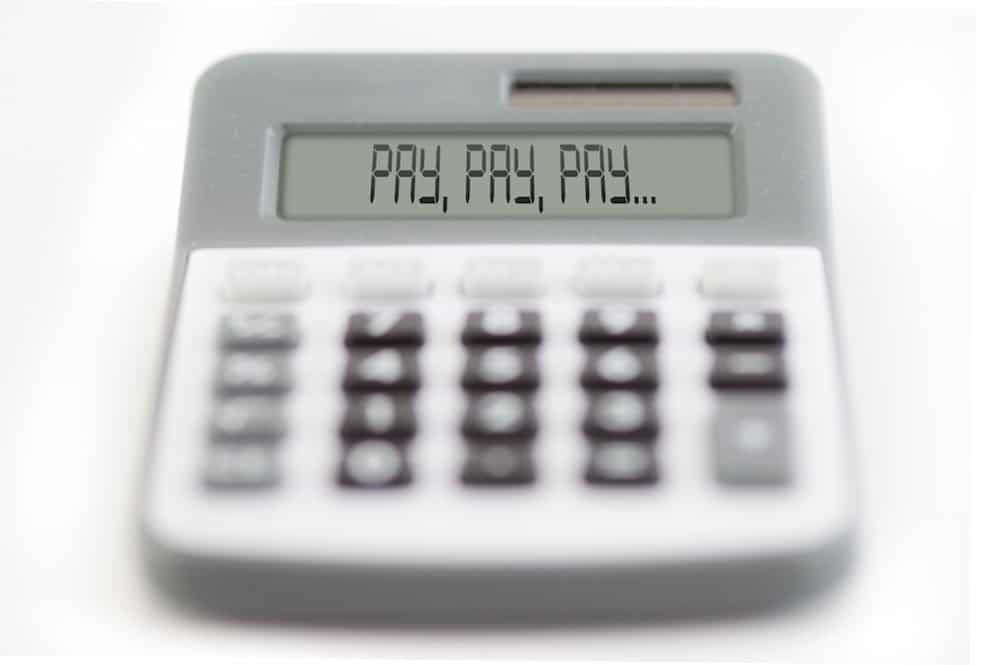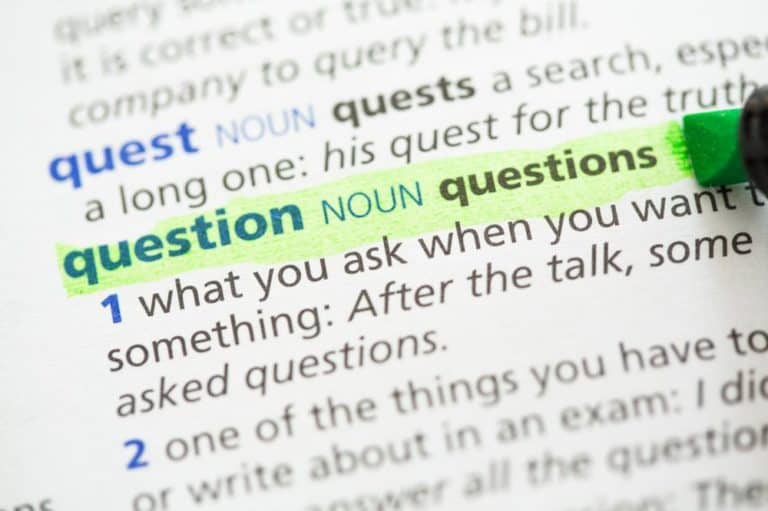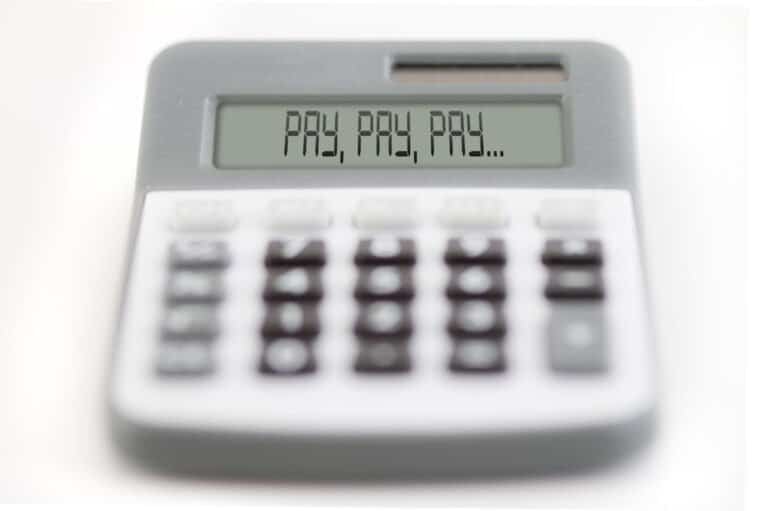FY2021: Veteran Readiness And Employment Subsistence Pay Increases
Many veterans using the GI Bill may be unaware they are qualified for thousands more in benefits through Veteran Readiness and Employment (Chapter 31 VR&E).
Formerly called Vocational Rehabilitation and Employment, Chapter 31 VR&E program participants may be eligible for subsistence payments at dramatically different rates based on remaining GI Bill entitlement and location.
[NOTICE: This information is updated. See Updated FY 2022 VR&E Subsistence Rates]
The name change came in the summer of 2020 as a result of human-centered design research. Using new technologies, agency leadership learned veterans were frequently confused by the terms “vocational” and “rehabilitation” when it came to understanding the program. So, they changed the name of the program to Veteran Readiness and Employment.
Starting January 1, 2021, the Basic Allowance for Housing (BAH) rates will increase an average of 2.9 percent once the clock strikes midnight after New Year’s Eve. For fiscal year 2021, which starts October 1, 2020, an increase to the standard subsistence rate for Chapter 31 VR&E users at the standard rate already saw a slight increase.
The 2.9 percent increase is an average for all areas, but the actual rates are dependent on individual locations. The rates locally are set on local rental housing market. Not all locations will see an increase from the previous year and may even go down.
The highest subsistence rate is San Francisco, California. At the time of this writing, veterans without dependents may receive $3,822 per month. Veterans with dependents may receive $4,971 per month.
The lowest subsistence rate is in Lawton, Oklahoma. Veterans without dependents may receive $762 per month. Veterans with dependents may receive $954 per month.
Veterans using Chapter 31 VR&E who lack GI Bill eligibility to qualify for the BAH subsistence rates generally receive lower subsistence rate payments unless they have higher numbers of dependents.
Under the traditional Chapter 31 VR&E rates, a veteran without dependents may receive a subsistence rate of $653.96. Meanwhile, a veteran with at least two dependents is eligible to receive $955.92. Beyond two dependents, a veteran may receive $69.66 per additional dependent. So, a veteran with 8 dependents may receive $1,373.88.
The GI Bill is a fantastic benefit where many veterans receive a subsistence payment plus coverage for tuition at a state university for up to 36 months.
Yes, that is fantastic. But is it the whole story?
It is for veterans without qualifying disability ratings where the disability results in a vocational impairment the effect of which has not been overcome.
Veterans with disability ratings of 10 percent or higher may consider using Chapter 31 VR&E based on a little secret about that program that some Veteran Service Organizations (VSOs) fail to understand.
Some well intended but misinformed VSOs keep telling disabled veterans that the GI Bill is the only way to go while leaving out one key detail.
<< Disabled veterans with an Employment Handicap or Serious Employment Handicap may be approved for training in professional careers where the training lasts longer than 36 months in total. >>
What does that mean and why does it matter?
Employment Handicap and Serious Employment Handicap
The concept of an Employment Handicap can get rather involved, so here is a shortened explanation of what this means.
Generally, a veteran with a service-connected disability that causes a vocational impairment the effects of which have not been overcome through training or other criteria will be deemed to have an Employment Handicap. The program will then evaluate the veteran for a potential Serious Employment Handicap (SEH).
Veterans deemed to also have an SEH may be eligible for additional training beyond what is considered necessary. Such a finding may also waive certain limitations to the total number of months of education the veteran may receive as well as time constraints to use the benefit.
Why does this matter?
Higher E-5 BAH Of GI Bill vs Standard VR&E Monthly Pay
For disabled veterans entitled to Chapter 31 VR&E benefits, these veterans may receive well over 36 months of benefits including subsistence payments. This is especially the case for some veterans with an SEH.
Veterans with remaining entitlement to the GI Bill may then opt in for the higher subsistence payments at E-5 rates equal to those of the GI Bill while also getting all tuition and expenses paid for well over 36 months.
You know how much that can add up to for some veterans in their undergrad who want to become doctors or lawyers after they graduate?
A lot of money.
For example, a veteran approved for a rehabilitation plan that includes completion of both an undergraduate degree and graduate degree may also receive the higher BAH subsistence amount for the entire duration of training for up to 48 months or more.
Two examples of this would be a veteran who is approved to become a physician or lawyer.
San Francisco veterans who follow the advice of the VSO may be leaving $48,000 on the table in subsistence payments each year beyond 36 months if the veteran takes the bad advice.
Instead of receiving nearly $5,000 per month with one dependent, VR&E would instead pay only $811.18 per month.
Is this a good deal?
It is if you saved back some GI Bill entitlement prior to applying for benefits from Chapter 31, VR&E.
Here is the agency’s breakdown of the subsistence increase.
VA Policy Document On Subsistence FY 2020
On October 1, 2020, an increase to traditional Chapter 31 subsistence allowance rates went into effect. The remainder of this post highlights the following:
- The new Chapter 31 rates and the first increased payment date
- Processing subsistence allowance in Corporate WINRS Subsistence Allowance Module (SAM)
- How running Chapter 31 awards will be adjusted
- How Veterans will be notified about the Chapter 31 increase
- Election of alternate subsistence allowance under Public Law (PL) 111-377
- Who to contact with Chapter 31 subsistence allowance questions
- Cities with the highest and lowest BAH rates are listed
1. The New Chapter 31 Rates And The First Increased Payment Date
The enclosed table reflects the new traditional Chapter 31 VR&E subsistence allowance rates that are effective October 1, 2020 through September 30, 2021. Since the Department of Veterans Affairs (VA) pays subsistence allowance for training that has been completed in the previous month, the first payment at these rates will be reflected in the November 1, 2020 subsistence allowance payment/disbursement.
RELATED: Voc Rehab Survival Guide (Ben’s ecourse on winning Chapter 31 VR&E benefits)
|
Type of Training |
Training Time |
No Dependents |
One Dependent |
Two Dependents |
Each Additional Dependent |
|
Institutional; Nonpay or nominal pay work experience in a facility of a Federal, State, local, or federally recognized Indian tribe agency; Improvement of Rehabilitation Potential: |
Full-Time |
$653.96 |
$811.18 |
$955.92 |
$69.66 |
|
¾ Time |
$491.38 |
$609.27 |
$714.69 |
$53.59 |
|
|
½ Time |
$328.78 |
$407.36 |
$478.83 |
$35.74 |
|
|
¼ Time1 |
$164.37 |
$203.71 |
$239.42 |
$17.83 |
|
|
Nonpay or nominal pay on-job training in a facility of a Federal, State, local, or federally recognized Indian tribe agency; Training in the home; Vocational course in a rehabilitation facility or sheltered workshop; Independent instructor: |
Full-Time Only |
$653.96 |
$811.18 |
$955.92 |
$69.66 |
|
Farm Cooperative, Apprenticeship or other On-Job Training2: |
Full-Time Only |
$571.77 |
$691.45 |
$796.88 |
$51.82 |
|
Combination of Institutional and On-Job Training (Institutional Greater than One Half); Non-farm Cooperative Institutional Training and Non-farm Cooperative On-Job Training (FT Non-Farm Coop/Institutional): |
Full-Time Only |
$653.96 |
$811.18 |
$955.92 |
$69.66 |
|
Combination of Institutional and On-Job Training (On-the-Job Greater than ½); Non-farm Cooperative Institutional Training and Non-farm Cooperative On-Job Training (FT Non-Farm Coop/On-the-Job): |
Full-Time Only |
$571.77 |
$691.45 |
$796.88 |
$51.82 |
2. Processing subsistence allowance in Corporate WINRS (SAM)
Traditional Chapter 31 subsistence allowance rate awards already entered into SAM have been automatically adjusted with the COLA rate effective October 1, 2020. New award entries will display the COLA adjustment effective October 1, 2020.
Post 9/11 subsistence allowance rate awards require no additional action in SAM at this time. The revised rate for P911SA rates will be available later this year.
3. How running Chapter 31 awards will be adjusted
In early October 2020, a batch computer program should have identified and automatically retroactively adjusted awards that include an effective date of October 1, 2020, or earlier.
The automatic adjustment to Chapter 31 awards will:
- Generate online notice of exception messages for cases that could not be adjusted by the batch process and that require regional office action to manually adjust the subsistence rate.
- Generate a report of all SAM adjusted and non-adjusted cases in early October 2020.
- Generate award letters to Veterans notifying them of the change in their subsistence rate(s) effective on or after October 1, 2020.
4. How Veterans Will Be Notified About The Chapter 31 COLA Increase
All Veterans receiving the traditional Chapter 31 VR&E subsistence rate at the end of September 2020 should have received notification of the new rates by VA Form 28-0347, which includes a copy of the traditional Chapter 31 VR&E subsistence allowance rate table enclosed with this letter.
5. Election of Alternate Subsistence Allowance under Public Law 111-377: Post 9/11 Subsistence Allowance (P911SA) Rate
As an informational addendum to this form letter, the following subsistence allowance option has been included. The law implementing this allowance option became effective in late fiscal year 2011, and is included here for use in comparing options for subsistence which may be open to the Veteran participant.
Public Law 111-377, Section 205 amended Title 38 of the United States Code, Section 3108(b), effective August 1, 2011. This change in the law authorizes VA to allow a Veteran, entitled to both a Chapter 31 subsistence allowance and Post 9/11 GI Bill Chapter 33 educational assistance, to elect to receive a payment in an alternate amount instead of the regular Chapter 31 subsistence allowance. To receive the alternate payment, referred to as the P911SA rate, a Veteran must make an election of benefits with an effective date on VA Form (VAF) 28-0987, Election for CH 31 Subsistence Allowance (CH31SA) Rate or Post-9/11 Subsistence Allowance (P911SA) Rate. The alternate payment will be based on the military basic allowance for housing (BAH) for an E-5 with dependents residing in a military housing area that encompasses all of, or the majority portion of, the ZIP Code of the training facility, agency, or employer providing the rehabilitation program. Training in foreign institutions and training that is solely on-line or in-home will be based on the BAH national average.
Calculate BAH Rate
The Department of Defense (DoD) sets BAH rates each calendar year, therefore, new BAH rates are effective January 1st each year, not October 1st. BAH for full-time attendance (or rate of pursuit) may be calculated at the DoD website:
- https://www.defensetravel.dod.mil/site/bahCalc.cfm
- Enter year (“2019”), ZIP Code of the training facility (school, employer for OJT programs, or agency approved for work experience programs), and “E-5”
- Click “calculate”
- Use rate for “E-5 with dependents”.
- Per Public Law 115-48, participants who used entitlement to Chapter 31 benefits and services on or before December 31, 2017, will add an additional amount to this rate. The additional amount will be published in January 2019.
For training at a facility within a United States (U.S.) Territory (not solely online), identify the appropriate locality code (similar to a U.S. ZIP Code) where the Veteran is enrolled in training.
Verify that the site is located in one of the U.S. Territories under which the Overseas Housing Allowance (OHA) under the Post-9/11 Chapter 33 is payable: American Samoa, Northern Mariana Islands, Puerto Rico, Virgin Islands and Guam.
Go to the Department of Defense website:
- https://www.defensetravel.dod.mil/site/ohaCalc.cfm
- Enter the year, month and day. If the term starts prior to the 15th day of the month, use the 1st day of the month in which the term begins; if the term starts on or after the 16th day of the month, use the 16th day of the month in which the term begins.
- Choose the correct location from the drop-down box.
- Choose pay grade “E-5”.
- Choose “Yes” in the dependents box.
- Click “Calculate” to obtain the rate.
- The correct rate of pay for P911SA is titled “OHA Rental Allowance”.
The following table specifies payment of the alternate subsistence allowance that VA is calling the Post-9/11 subsistence allowance, as governed by Title 38 Code of Federal Regulations (CFR) § 21.260(c).
|
PAYMENT OF POST-9/11 SUBSISTENCE ALLOWANCE IN ACCORDANCE WITH PUBLIC LAW 111-377 (EFFECTIVE AUGUST 1, 2011)[1] |
|
|
TYPE OF PROGRAM |
BAH PAYMENT INCREMENT |
|
Institutional:[2] |
|
|
Full-time |
Entire BAH of institution ZIP Code |
|
3/4 time |
¾ BAH of institution ZIP Code |
|
1/2 time |
½ BAH of institution ZIP Code |
|
Non-pay or nominal pay on-job training in a Federal, State, local, or federally recognized Indian tribe agency; vocational course in a rehabilitation facility or sheltered workshop; institutional non-farm cooperative: |
|
|
Full-time only |
Entire BAH of agency or institution ZIP Code |
|
Non-pay or nominal pay work experience in a Federal, State, local, or federally recognized Indian tribe agency: |
|
|
Full-time |
Entire BAH of agency ZIP Code |
|
3/4 time |
¾ BAH of agency ZIP Code |
|
1/2 time |
½ BAH of agency ZIP Code |
|
Farm cooperative, apprenticeship, or other on-job training (OJT):[3] |
|
|
Full-time only |
Entire BAH of employer ZIP Code |
|
Combination of institutional and OJT (Full-time only): |
|
|
Institutional greater than 1/2 time |
Entire BAH of institution ZIP Code |
|
OJT greater than ½ time3 |
Entire BAH of employer ZIP Code |
|
Non-farm cooperative (Full-time only): |
|
|
Institutional |
Entire BAH of institution ZIP Code |
|
On-job3 |
Entire BAH of employer ZIP Code |
|
Improvement of rehabilitation potential: |
|
|
Full-time |
Entire BAH of institution ZIP Code |
|
3/4 time |
¾ BAH of institution ZIP Code |
|
1/2 time |
½ BAH of institution ZIP Code |
|
1/4 time4 |
¼ BAH of institution ZIP Code |
|
Training consisting of solely distance learning:5 |
|
|
Full-time |
½ BAH National Average |
|
¾ time |
⅜ BAH National Average |
|
½ time |
¼ BAH National Average |
|
Training in the home, including independent instructor: |
|
|
Full-time only |
½ BAH National Average |
|
Training in an institution not assigned a ZIP Code, including foreign institutions:6 |
|
|
Full-time |
Entire BAH National Average |
|
¾ time |
¾ BAH National Average |
|
½ time |
½ BAH National Average |
1 Effective August 1, 2011, the Post-9/11 subsistence allowance may be paid in lieu of subsistence allowance authorized in § 21.260(b), and is not adjusted to include dependents.
2 For measurement of rate of pursuit, see §§ 21.4270 through 21.4275. Payments for courses being taken simultaneously at more than one institution are based on the BAH of the ZIP Code assigned to the parent institution.
3 For on-job training, payment of the Post-9/11 subsistence allowance may not exceed the difference between the monthly training wage, not including overtime, and the entrance journeyman wage for the veteran’s objective.
4 The quarter-time rate may be paid only during extended evaluation.
5 Payment for training consisting of both distance learning and courses taken at a local institution is based on the BAH of the ZIP Code assigned to the local institution.
6 Payment for training or OJT in an institution outside the US, but identified as a U.S. Territory, is based on the OHA rate for the locality code assigned to the institution.
6. Who To Contact For Chapter 31 Subsistence Allowance Questions
Please refer to M28C located on the Knowledge Management Portal (KMP), for additional procedural guidance on the authorization and processing of subsistence allowance payments.
Questions regarding subsistence allowance award processing may be directed to your district VR&E Field Liaison at the e-mail address listed below.
|
District |
Primary |
Alternate |
|
|
Northeast |
Latrese Arnold |
Veronica Brown |
|
|
Southeast |
Veronica Brown |
Latrese Arnold |
|
|
Continental |
LeGuster Seawright |
Lynn Horwatt |
|
|
Pacific |
Lynn Horwatt |
LeGuster Seawright |
How To Email VR&E Employees
So, if you run into issues apparently you can contact any of the above-listed individuals based on the area where your regional office is located. Agency emails are simple enough to figure out, usually.
For example, the email for Lynn Horwatt is likely [email protected]. Send her a note if you have issues and use a Regional Office assigned to the Pacific.
7. BAH Cities Compared
2021 Areas With The Highest BAH Rates
These are the cities with the highest BAH rates in the country.
- San Francisco, CA (MHA: CA019)
- Santa Clara County, CA (MHA: CA044)
- Westchester County, NY (MHA: NY349)
- Long Island, NY (MHA: NY218)
- Nantucket, MA (MHA: MA119)
- New York City, NY (MHA: NY219)
- Marin/Sonoma, CA (MHA: CA027)
- Boston, MA (MHA: MA120)
- Oakland, CA (MHA: CA018)
- Florida Keys, FL (MHA: FL069)
2021 Areas With The Lowest BAH Rates
These are the cities with the highest BAH rates in the country.
- Terre Haute, IN (MHA: IN338)
- Fort Leonard Wood, MO (MHA: MO163)
- Youngstown, OH (MHA: OH233)
- Anniston/Fort McClelland, AL (MHA: AL001)
- Charleston, WV (MHA: WV323)
- Sault Ste Marie, MI (MHA: MI145)
- Saginaw, MI (MHA: MI156)
- Fort Chaffee/Fort Smith, AR (MHA: AR012)
- Saint Joseph, MO (MHA: MO344)
- Fort Still/Lawton, OK (MHA: OK237)
Historic BAH Rate Increases
| Year | Proposed Increase/Decrease | Actual Increase |
| 2021 | 2.90% – 3.70% | 2.90% |
| 2020 | 2.90% | 2.8% |
| 2019 | 2.90% | 2.55% |
| 2018 | 2.90% | 0.7% |
| 2017 | 2.90% | 2.4% |
| 2016 | 1.30% | 3.4% |
| 2015 | -5.00% | 0.5% |
| 2014 | 4.20% | 5.00% |
| 2013 | 4.20% | 3.80% |
| 2012 | 4.20% | 2.0% |





I’m a 100% T&P disabled Vietnam veteran with a wife! I received my pay increase on December 31st. I received approximately $40 increase. But, thanks to the dems, rinos and mainstream medias doing ” gloom and doom” over this coronavirus plandemic, my rent increased by about the same amount.
Before any of you start bashing me. It’s already known the “numbers” are inflated over this crap. They’re doing it to keep people scared! That way the population can be controlled! Don’t believe me? Research it! The mainstream medias are culpable for manipulating everything!
The most current example, of manipulation was that of a newly elected congressman. Who went into the hospital, after testing positive for covid, for a minor “proceedure” had a “massive coronary” and passed away. The MSM, along with Pelosi, claimed he died of covid. The hospital AND his physician said a heart attack. I believe the hospital and his physician!
There’s more! Only I’m sure some on here will spread misinformation against me!
Vietnam Veterans will be the last group to get the Covid-19 Vaccine.
As our group continues to decline.
Could I get a shot like Rubio got?
Nah no way
do I still qualify to use Chap 31? I am 68, 100% VA disabled. I was told too old to use this benefit.